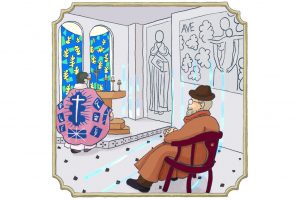The current Imperial Hotel in Hibiya is the third generation. The second-generation building was designed by Frank Lloyd Wright (1867–1959). Japan and Canada were the only countries outside the U.S. where Wright’s architecture was realized. I’m sure some of you have heard of Jiyu Gakuen near Mejiro Station. Wright visited Japan seven times, including his first visit in 1905. His early buildings, in particular, were characterized by a plan similar to that of temples such as Nikko Toshogu Shrine and deep eaves and horizontal expanses similar to traditional Japanese houses. He was also an ardent Japanophile, producing architectural drawings with clear perspectives, as seen in ukiyoe prints, and a great collector and dealer of Hiroshige Utagawa.
Frank Lloyd Wright
Examining artists
No.033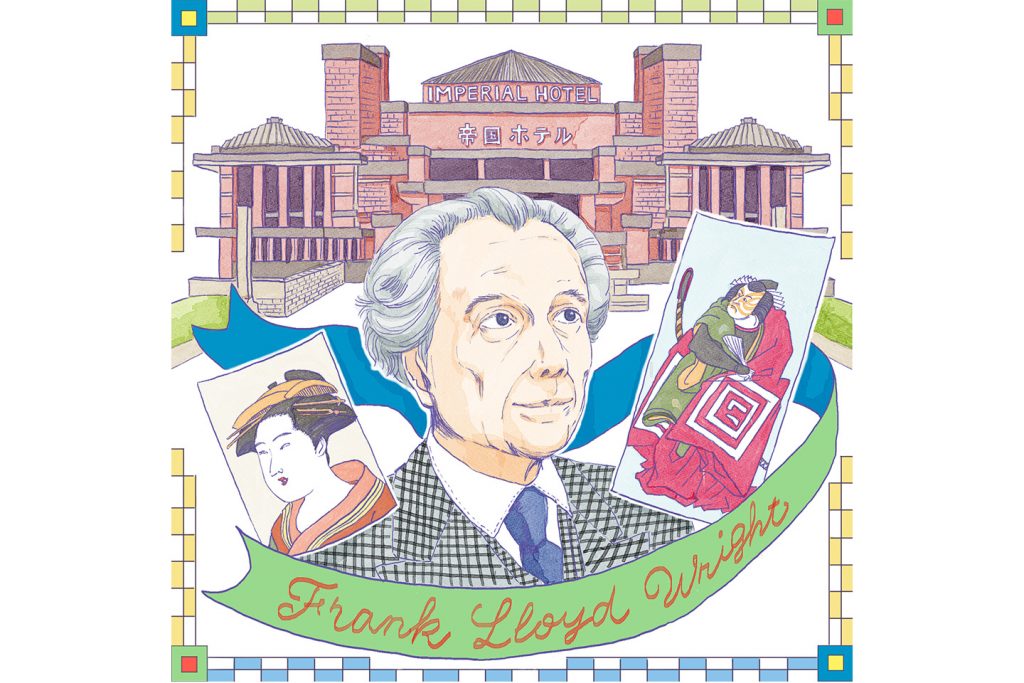
This time, the Examining Artists series picks up Frank Lloyd Wright (1867–1959), a master of modern American architecture. A lover of ukiyoe prints and an ardent Japanophile, Wright designed “the Imperial Hotel (now partially relocated and preserved at Museum Meiji-Mura)” and “the Jiyu Gakuen School”. He was active across the world, with a broad perspective spanning not only art, architecture, and design, but also education and urban planning. The article introduces Wright’s life and episodes with Nanako Kakei’s colorful illustrations.
Illustration: Nanako Kakei
Text: Machiko Chiba (Toyota Municipal Museum of Art)
Translation: Erica Sawaguchi
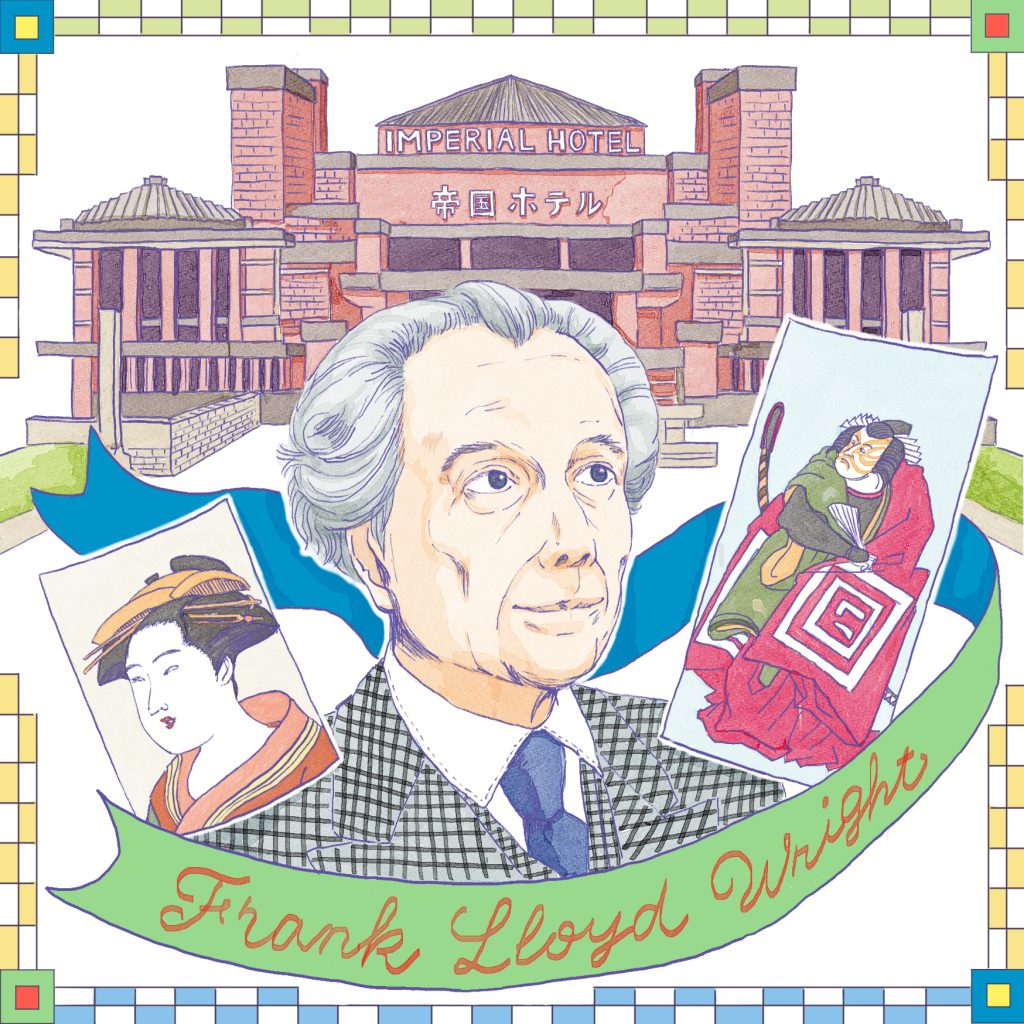
Wright is considered the master of modern architecture, which may make you think of him as macho. Interestingly, however, Wright was born to a mother with a passion for education, sympathized with women dedicated to progressive education, and designed elementary schools and kindergartens for them. Jiyu Gakuen is one such school. Wright was married four times in his life: his first wife, Catherine, opened a kindergarten in her own house; his second wife, Mamah, translated Ellen Kay’s book and introduced her to the US, the leader of the women movement. His fourth wife, Olgivanna, was an intelligent and talented woman who had studied with the French thinker Gurdjieff, and with her help, Wright started the “Taliesin Fellowship”, a self-sufficient architectural school for the education and practice of architecture, in 1932.
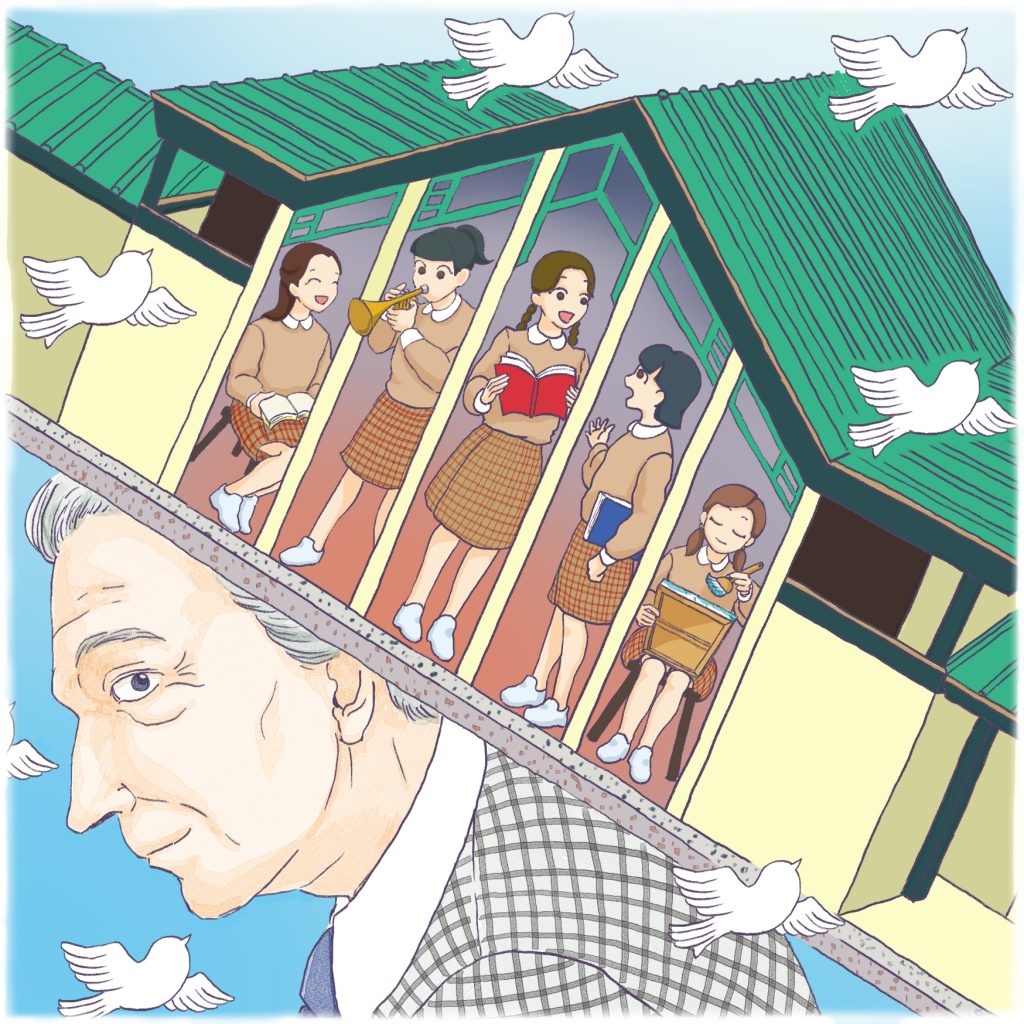
Wright was also greatly interested in materials. The Imperial Hotel audaciously used Oya stone from Tochigi Prefecture and “scratch tiles” specially manufactured by a factory opened in Tokoname, Aichi Prefecture. The soft Oya stone was easy to process, and bold decorative patterns could be carved into its surface. Another interesting aspect of Wright is that he saw potential in concrete. Concrete can seem artificial and cold, but Wright mixed it with local gravel and took advantage of its plastic nature to create surface patterns that were appropriate to the area. The unique spiral shape of the Guggenheim Museum in New York is another result of Wright’s attention to concrete’s flexibility.
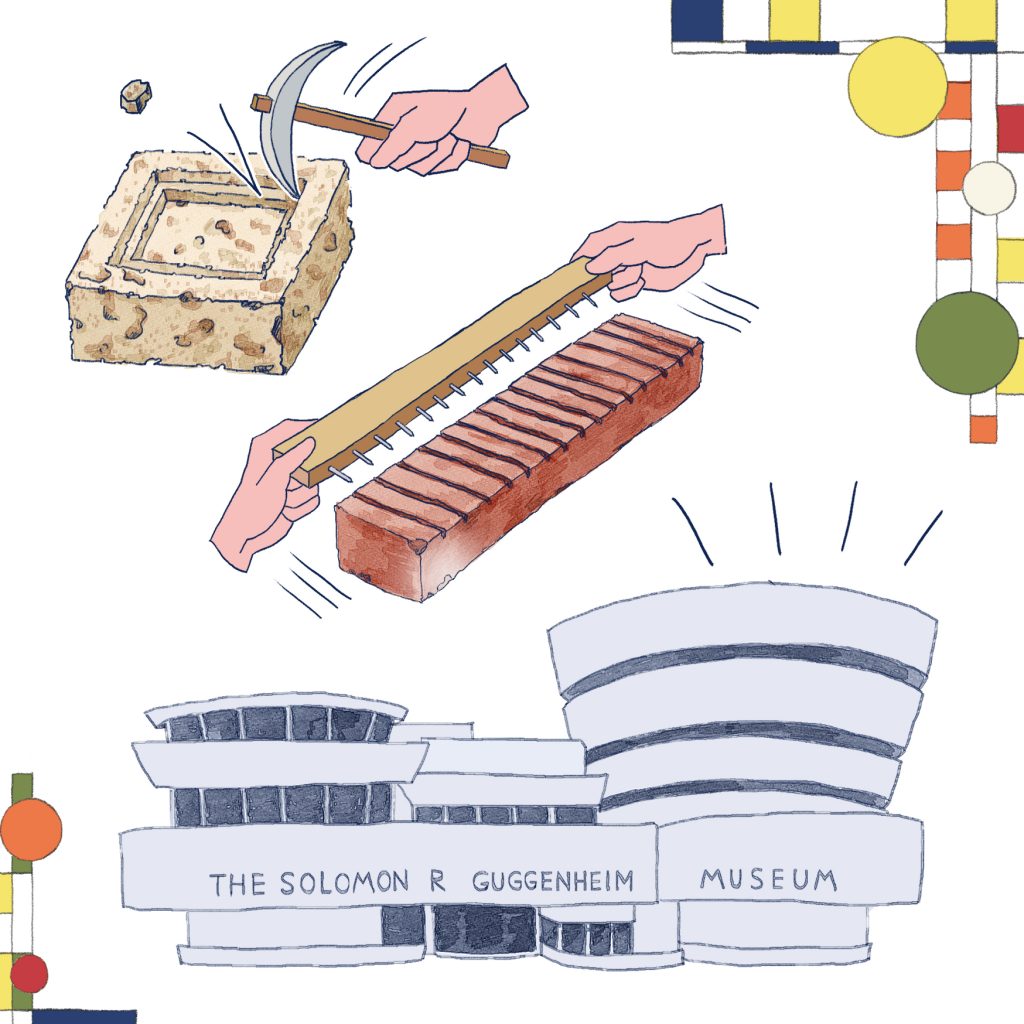
Since Wright presented his “Broadacre City concept” in 1934, he continuously studied this future city. Its most distinctive feature is the fusion of rural and urban functions. Wright also proposed a plan for high-rise buildings like the Mile-High Illinois (as high as 1,600 meters!). It significantly differed from urban landscapes with clusters of buildings because Wright’s plan concentrated the necessary urban functions in a single building to secure freely usable land. Wright envisioned a rich world where people maintained their connection with nature and agriculture. With cars, small airplanes, and telecommunications, people could easily travel great distances or interact remotely. It is as if he predicted the future for those of us who experienced the pandemic era.
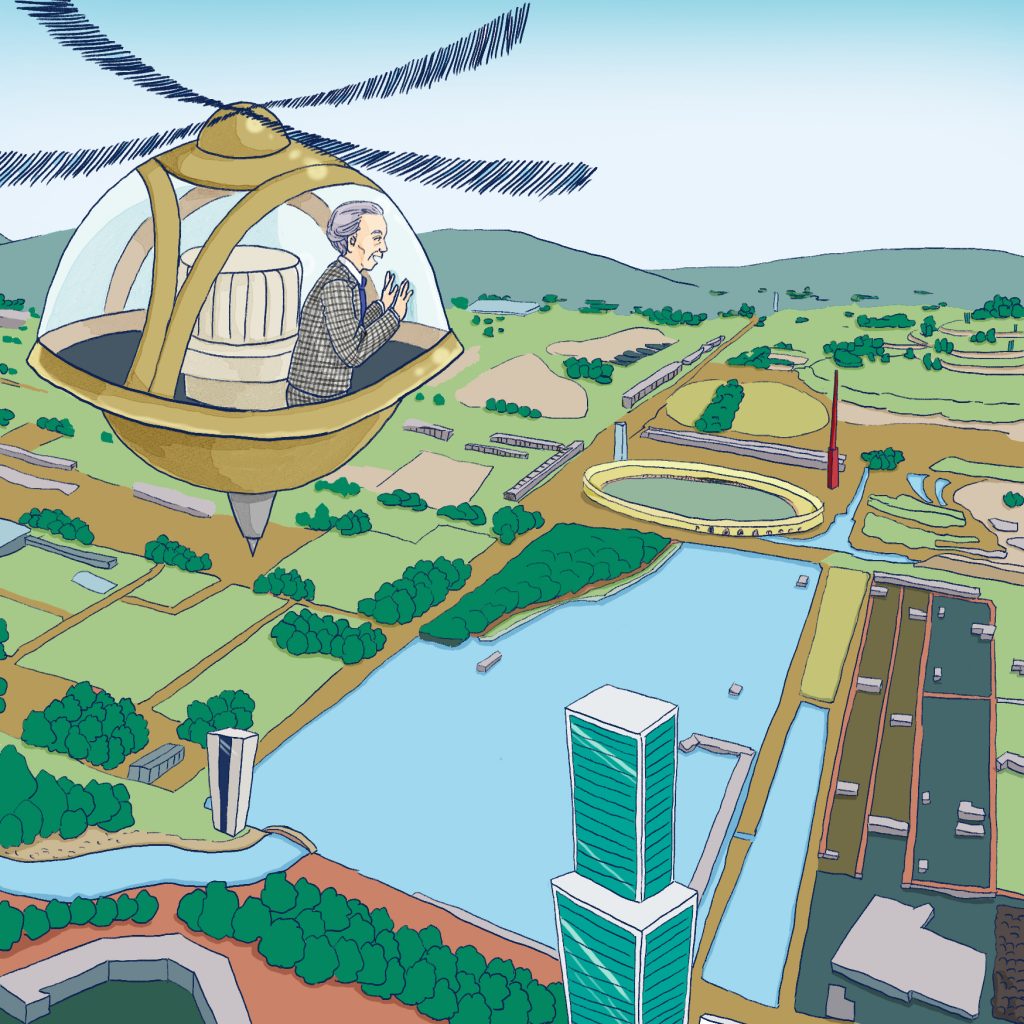
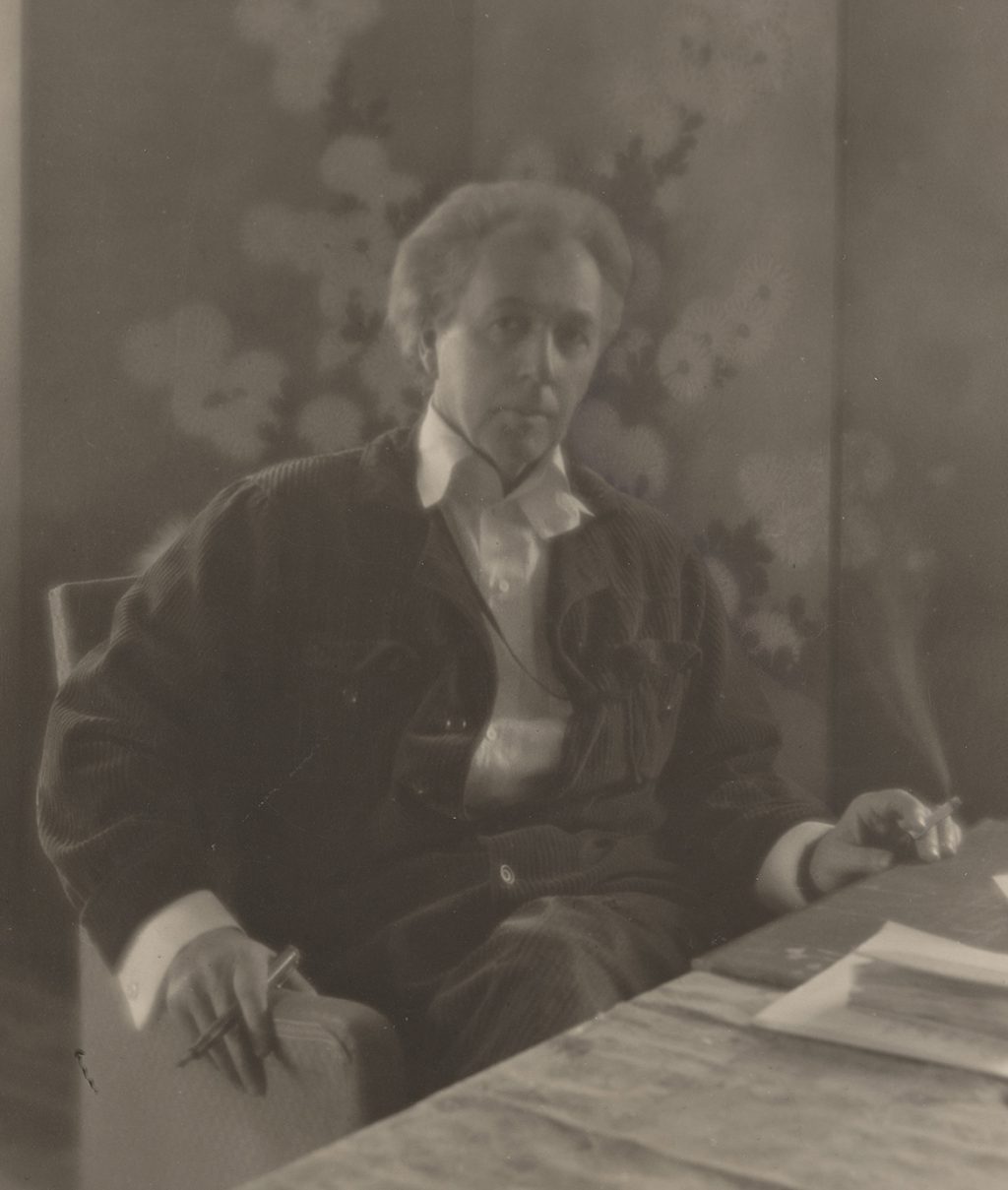
Frank Lloyd Wright
Along with Le Corbusier and Mies van der Rohe, Wright is known as one of the three great masters of modern architecture. It is said that Wright designed more than 1,000 buildings, some of which are registered as World Cultural Heritage sites. He invented Prairie Style, a style in which the height of buildings is kept low, and they stretch out horizontally from the ground.
Nanako Kakei
Illustrator and researcher of contemporary art and decorative history. Lecturer at the School of Humanities and Culture at Tokai University. In addition to conducting research on art, she produces illustrations and manga. Her publications include The Illustrated Guide to Contemporary Art and Ito okashiki 20 seiki bijutsu (Super interesting 20th-century art).
https://zigzaqro.com/



